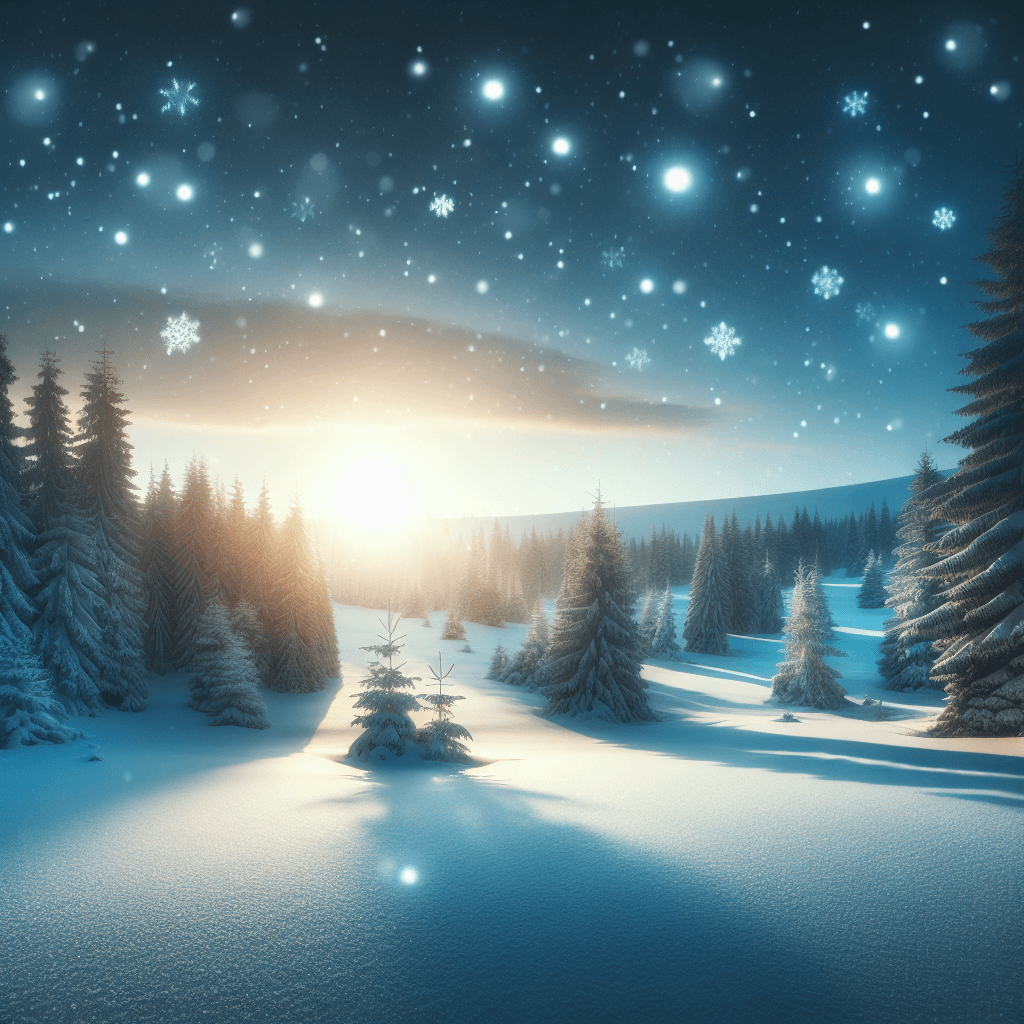What makes freshly fallen snow so incredibly quiet
The secret to that profound winter silence isn't about what's missing from the world, but what has just been added to it.


Too Long; Didn't Read
TLDR: Freshly fallen snow has a lot of open space between its ice crystals. These air gaps trap and absorb sound waves, preventing them from echoing and making the world seem quieter.
Blog Post Title: The Science of Silence: What Makes Freshly Fallen Snow So Incredibly Quiet?
Introduction
Have you ever stepped outside after a heavy, overnight snowfall and been struck by the profound silence? The usual hum of distant traffic, the chatter of neighbors, and the rustling of trees all seem to have vanished, replaced by a soft, peaceful hush. This isn't just a poetic feeling; it's a measurable, physical phenomenon. The world genuinely becomes quieter under a blanket of fresh snow. But why? This post will delve into the fascinating science behind this natural soundproofing, exploring how the unique structure of snowflakes works to absorb sound and create that serene winter quiet we all know and love.
Main Content
It All Starts with the Snowflake
The secret to snow's silencing ability lies in its fundamental structure. A snowflake isn't a solid, frozen droplet. It's a delicate ice crystal, typically with six intricate arms. When millions of these uniquely shaped crystals fall and accumulate on the ground, they don't pack together tightly like grains of sand or drops of rain.
Instead, their complex, branching shapes create a porous, fluffy layer with a tremendous amount of empty space trapped between them. In fact, a fresh layer of snow can be composed of up to 90% trapped air. This high-air composition is the first and most crucial element in understanding why snow is such an effective sound muffler.
Snow: Nature's Acoustic Tile
To understand how snow dampens sound, we first need to know how sound travels. Sound moves in waves, radiating from a source and vibrating through a medium, like air. When these sound waves hit a surface, one of two things happens: they either reflect off it or they are absorbed by it.
- Hard, smooth surfaces (like pavement, ice, or a brick wall) are excellent reflectors. They bounce sound waves back into the environment, creating echoes and allowing noise to travel farther.
- Soft, porous surfaces (like foam, heavy curtains, or carpet) are excellent absorbers. They trap sound waves, converting their energy and stopping them from reflecting.
Freshly fallen snow acts like a natural acoustic tile covering the entire landscape. When a sound wave enters the snowpack, it doesn't find a solid surface to bounce off. Instead, it travels into the maze of air pockets between the individual ice crystals. As the wave bounces around within these tiny spaces, its energy is dissipated and converted into an imperceptible amount of heat, effectively deadening the sound.
Acoustic experts at institutions like Michigan Technological University have found that just two inches of fresh, light snow can absorb about 60% of the sound that hits it. This is why the world feels so dramatically hushed after a good snowfall—a huge portion of ambient noise is simply being swallowed by the ground.
Not All Snow Is Created Equal
The magical quieting effect is most potent when the snow is fresh, cold, and fluffy. As snow conditions change, so do its acoustic properties.
Over time, snow begins to change. It can be compacted by wind or its own weight, or it can melt and refreeze. This process, known as sintering, closes the air gaps between the ice crystals, creating a denser, harder surface. This icy crust is far more reflective of sound than fluffy powder. It's the reason why walking on old, crusty snow produces a loud "crunching" sound, while stepping in fresh powder is nearly silent. The type of snowfall also matters; wet, heavy snow has less air and is less effective at absorbing sound than the light, dendritic crystals formed in colder, drier conditions.
Conclusion
The serene quiet of a snow-covered world is a direct result of physics in action. It’s not your imagination—it’s the collective effort of millions of tiny, intricate ice crystals. By creating a porous layer filled with trapped air, a fresh blanket of snow acts as a highly effective natural sound absorber, trapping and dampening the sound waves that would normally bounce across the landscape. This transforms our noisy world into a place of peaceful stillness. So, the next time you find yourself immersed in that unique winter silence, take a moment to appreciate the incredible acoustic engineering of a simple snowflake.


